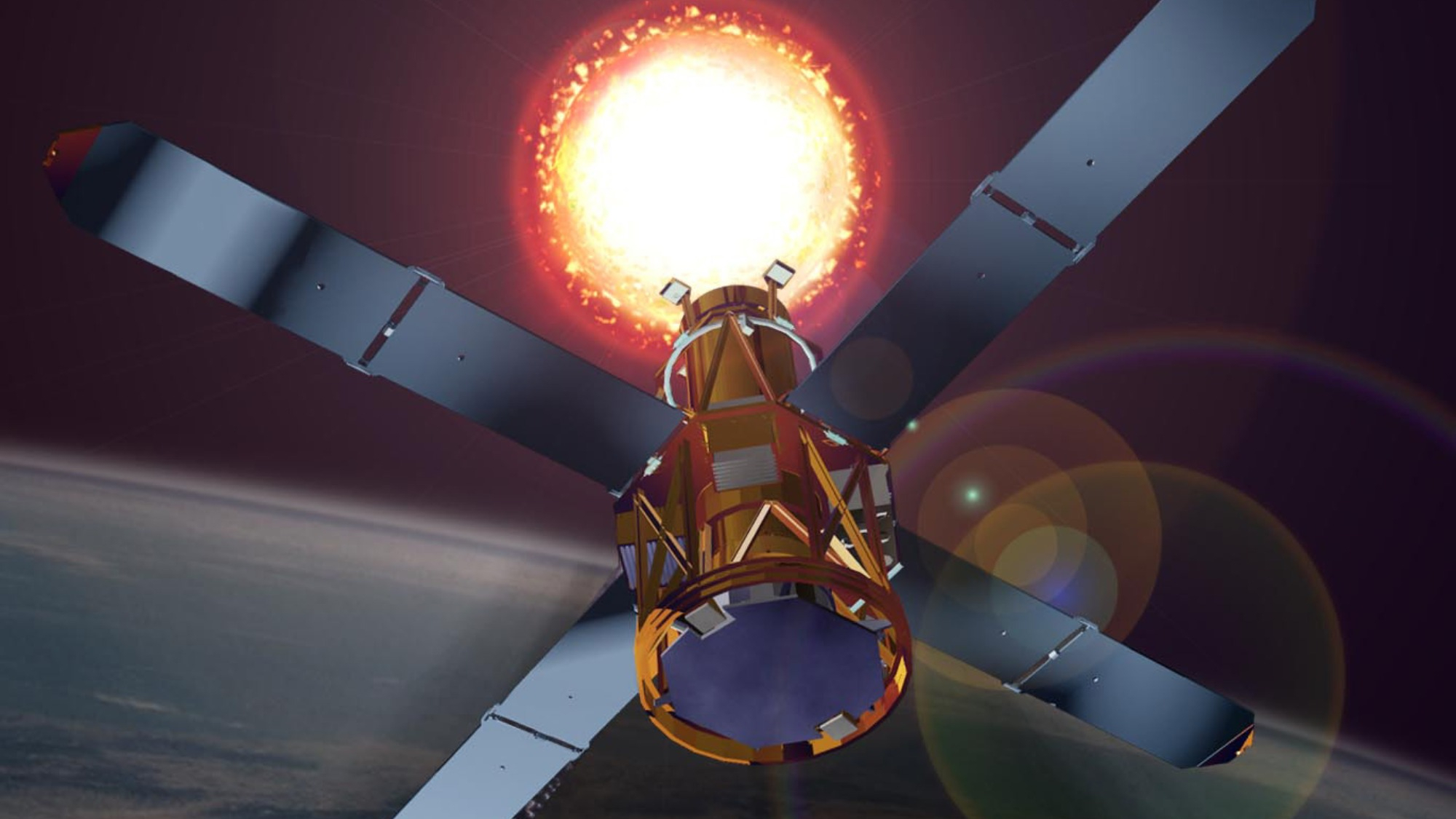

Heads up, everyone: a 600-pound, decommissioned satellite is on track to fall from orbit on Wednesday. While most of it is expected to burn up upon reentry, “some components are expected to survive,” according to NASA. Don’t worry; there’s probably no need to run for shelter, as the agency estimates that the odds for personal harm are around 1 in 2,467.
Per the space agency’s announcement, the Reuven Ramaty High Energy Solar Spectroscopic Imager (RHESSI) is expected to re-enter Earth’s atmosphere on April 19 at approximately 9:30 pm EDT, give or take roughly 16 hours. First launched into low-Earth orbit in 2002, RHESSI was tasked with observing solar flares and coronal mass ejections through X-rays and gamma rays emitted by the sun. The data collected by RHESSI helped scientists better understand the events’ physics, as well as how they are created. According to NASA, such flares routinely emit the energy equivalent of billions of megatons of TNT “within minutes.” Here on Earth, these blasts frequently disrupt electrical grids and systems across the globe.
“RHESSI even made discoveries not related to flares, such as improving measurements of the Sun’s shape, and showing that terrestrial gamma-ray flashes—bursts of gamma rays emitted from high in Earth’s atmosphere over lightning storms—are more common than previously thought,” NASA writes in their announcement.
[Related: The FCC is finally pulling the reins on space junk.]
During its 16-year-long tenure above earth, RHESSI recorded over 100,000 X-ray events, but was finally decommissioned in 2018 following increasing communications difficulties. For the past five years, RHESSI has quietly orbited Earth alongside an estimated 30,000 fellow pieces of debris. As Space.com also pointed out on Monday, its impending atmospheric reentry once again highlights the growing issue of space junk above everyone’s heads. While RHESSI’s return is planned and closely monitored, the larger problem has attracted increasing attention, particularly following the undirected reentry of a 23-ton portion of Chinese rocket detritus in 2021. That same year, an unannounced Russian military exercise sent shards of an exploded satellite hurtling towards the International Space Station. The ISS crew was briefly forced to lockdown, although neither they nor the space station was injured.
There are currently a number of suggestions for decluttering the crowded skies, including shooting nets to drag debris back towards Earth, and using tiny, clawed satellite robots to help clean up the mess. Last week, the Federal Communications Commission officially launched its Space Bureau tasked with a variety of responsibilities, including handling orbital trash. In a statement, the new bureau’s director, Julie Kearney, explained, “The first thing we’re really focused on, of course, is modernizing regulations to match our new realities and supporting tech innovation,” while also “simultaneously focusing on space, orbital debris and space safety.”
